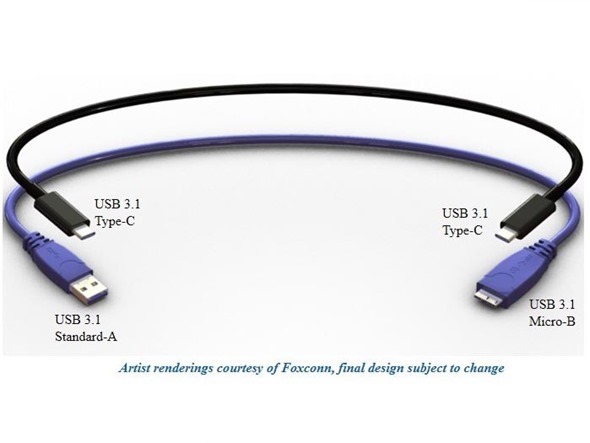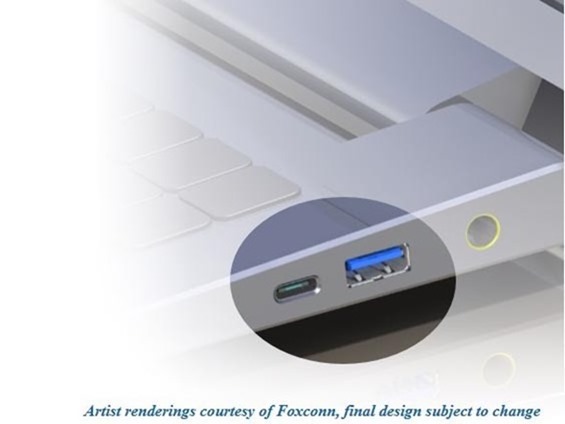Even though Apple’s continued effort to push proprietary mediums of physical connectivity goes against the ideals of many commentators, technologists and mobile users in general, there’s no doubt that the Lightning dock connection system is the most pleasurable to use on the market right now. The reason for this is its reversibility, which makes the process of hooking up a device just that little bit less tedious, but with USB 3.1, connections via non-Apple gadgets will soon improve in terms of both speed and overall design. On Wednesday, the USB Implementers Forum showcased two new USB 3.1 connector standards, demonstrating how regular USB connectors will soon follow the lead established by Apple.
As well as a reversible design making for a more practical standard, speeds will also be dramatically bumped from USB 3.0. The jump from 3.0 to 3.1 implies incremental changes, but in actual fact, the current 5 Gbps maximum transfer rate will increase to 10 Gbps, doubling what’s currently possible.

With cloud-based systems now lessening need for us to connect our devices to our computers (not to mention the rise of Wi-Fi-based syncing), the improved transfer speed isn’t the most exciting feature of USB 3.1. In fact, the most rousing aspect is the fact that charging times will also be greatly improved, with 3-5 A of current representing a dramatic upgrade on the 1.5 A possible at present.
Battery life remains a constant struggle in the evolution of mobile devices. Smartphone cameras are now more than capable shooting 4K and taking some stunning shots, but for the most part, you’ll struggle to get more than a full day out of a smartphone or tablet. While this new USB standard isn’t a direct solution, the ability to charge a battery in double the time would certainly help matters, and even though it’s unclear when exactly USB 3.1 will begin to take a hold on the mobile industry, it looks poised to have a significant impact on our digital world.


The Type-C cable illustrated, which takes the form of micro-to-micro connectors, is perhaps the most intriguing, and before long, we should begin to see larger machines such as computers packing ports of identical specification to our mobile devices.
What are your thoughts on it? Do you think this will finally end the frustrations which we’ve been facing with regular USB cables? The answer is an obvious one, but we love to hear it directly from you.
(via: TheVerge)
You can follow us on Twitter, add us to your circle on Google+ or like our Facebook page to keep yourself updated on all the latest from Microsoft, Google, Apple and the Web.

